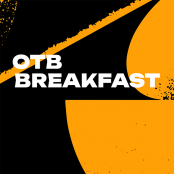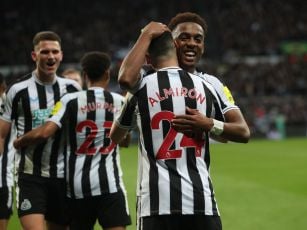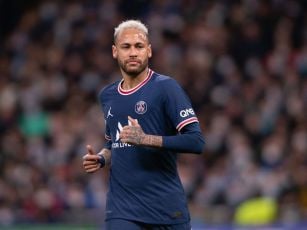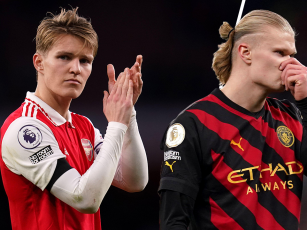The case of bringing football (or soccer) to the United States is a curious one; in most countries it has been built from the ground up with local clubs forming an integral part of the fabric of their communities, but the fact that the game was late to the party in America meant that it had to be imposed from the top down.
Despite that, the sport is becoming a bit of a success story in its own right, with big name players boosting the profile of the sport, the effects of which are being seen beyond the top level of Major League Soccer.
While players such as Ireland's Robbie Keane and former Liverpool captain Steven Gerrard have brought a lot of interest, participation in the game amongst kids in the United States is on the rise, and in the last three decades has seen a huge growth, meaning that it now sits just behind basketball in terms of participation. When it comes to watching the matches, the USA's game against Belgium in World Cup 2014 captured the imagination of the nation with an average of 16.5 million people watching, while the victory of the women's team in the World Cup final back in July drew an audience of around 26.7 million.
Those are all positive signs and suggest that the game as a whole is on the cusp of arriving in the US, and has been proactive in addressing concussion issues, something that is beginning to have an effect on American football's popularity.
The history of the sport in the country is an interesting one however, and much of that dates back to the establishment of the original North American Soccer League (NASL). Those teams featured some of the biggest stars in world football, albeit not at the height of their powers, turning out to play for teams like the Washington Diplomats and the Tampa Bay Rowdies.

New York Cosmos players Johan Cruyff, Giorgio Chinaglia and Franz Beckenbauer during training for their Soccer Bowl match against Tampa Bay Rowdies. Image: Peter Robinson / EMPICS Sport
While there's a certain amount of nostalgia for those teams and the heyday of the sport in America when the Cosmos could boast average attendances of 40,000, there were plenty of mistakes made that saw the sport struggle badly, culminating in the NASL folding in 1984.
By that time, Carlos Alberto, George Best and Pelé had all played in the league, along with a number of famous Irish stars including John Giles and Paddy Mulligan, but the game in America never seemed far from the brink of collapse. The signing of the Brazilian legend was a key part of its survival, even if it was only for a few more years.
There were many other difficulties in translating the game, and the quest to make it less alien to an Ameircan audience meant that a playoff game once lasted 176 minutes in the pursuit of naming a winner.
The collapse of that ill-fated league left a vacuum in the sport for much of the late '80s and early '90s, filled temporarily by the American Professional Soccer League and other indoor leagues that fought to keep the sport alive in the collective conscious of the American people.
Fast forward to 2015, and Major League Soccer is the dominant name, with a litany of big stars who have started to really make the game global. Huge stars like Didier Drogba and Frank Lampard have gone there to finish out their careers, but importantly, others have started going to the league earlier, such as Giovani Dos Santos, and are contributing something beyond just name recognition.
Not to be forgotten, the NASL is still around, and has also been attracting star names of their own, most notably Spanish legend Raul and European Championship winner Marcos Senna. Both stars recently retired, but along with Ronaldo's (Luís Nazário de Lima, not Cristiano) ownership of the Fort Lauderdale Strikers and Paolo Maldini getting involved with a new franchise in Miami, the future looks bright, if not a little reminiscent of the league's star-studded past.
Bill Peterson, chairman of the new-look NASL, spoke to Newstalk.com recently about the game in the United States, and the changes that have facilitated its growth from what was a particularly low point just a few short years ago.
"The biggest change in the landscape in the last ten years is that, while we've always had a lot of kids play, they're now growing up in soccer households. They used to go home and their dad would be watching baseball or NFL football or something [...] now he's watching soccer".
Coupled with an influx of games from the Premier League, La Liga and the Bundesliga, amongst others, the birth of the "pro soccer fan" has meant an increasing interest in the game both on and off the pitch, and it's one that is growing exponentially.
When it comes to the league's heritage, managing the legacy of it has proved to be a difficult task. Peterson stated that "when they [the clubs] took that name, they also took on the responsibility of bringing that history back. It's sort of been left behind [...] and we've put a lot of effort into reintroducing it to people who weren't around when that was happening, and there's been an amazing reaction from people to realise that there was professional soccer in this country in the 1960s and '70s, filling stadiums".
How that can affect the teams in their attempts to grow even further is a more complex issue: "the fans today want to know about your team, are they going to win? Can I watch it on TV? Is there a great stadium experience? If you're over 45, maybe you know that John Giles was here before, and we have some of those fans and we love them. We bring a lot of the players back, those guys were true barnstormers and it's great to have them, but it's a balancing act".

New York Cosmos' Pele (c) looks on as teammate Giorgio Chinaglia (l) runs at the Seattle Sounders defence. Image: Peter Robinson / EMPICS Sport
That balancing act is a delicate one also, as the clubs have a roadmap of success in what MLS have done ahead of them, but a map of the disaster that befell the old NASL in their rear view mirror.
Like many leagues around the world, attracting star talent from some of more established teams and competitions is a key part of that, but so is bringing homegrown talent through that fans can feel a connection to. For Peterson, the method is clear: "Don't sign a player for marketing reasons, sign a player to win a championship. Raul is a perfect example of that. He was brought in to shape that club in the locker room, shape their practice habits".
"Fans now are very sophisticated in the US," Peterson added, "and they'll smell in a second if you're bringing a guy in to help market your team. They want to win".
For European fans coming to the American game, they will notice one big thing that's missing: the promotion and relegation dynamic. While there's no direct path to the MLS from NASL, Montreal Impact have made the move in the past. With teams such as Indy Eleven in Indianapolis attracting full houses of about 11,000 for their home matches, communities are finding a place in their hearts for the teams, but can that last if they don't have a way to grow?
Peterson argues that the game itself will suffer unless the structure allows for that: "if you don't come up with a system where everybody's got an opportunity or a pathway to the top, you're never going to fully develop professional soccer in North America [...] it's another issue that's changing quickly. As the American pro soccer fan becomes even more savvy and is exposed to the rest of the world, the more they see the benefit of having that promotion relegation as a key part".
The way that structure is implemented needs to take into account the unique history of the sport there, however: "It's going to be a different structure in the United States I predict, just because of the size of the landmass and the size of the population, as well as the history of how the game has come to fruition here. It's sort of been dropped in top down rather than built up as it has in the rest of the world".
NASL itself won't be sitting still however, as their goal is to reach a point where the league can boast 20 teams in a single table. As they approach 15, with a number of teams already in place and more to be announced within 12-18 months, the focus has shifted from getting teams in, to putting those teams in the right locations: "we're stepping back now and going ok, there are only a few openings left. Where do we really want those clubs to be? Are there ownership groups there who fit in with who we are?".
That question of identity still needs some resolving before the product can have international success, in particular given that the game has always been pushed artificially in the country rather than grown organically.
It has taken a while, but perhaps that organic process has started, as NASL are bringing the game to parts of the country where there is now an audience who are hungry to get involved. Peterson's mission has already started to yield results, including the capture of young Haji Wright for the New York Cosmos. Should he prove to be a breakout superstar, it could bring the league the success and domestic profile that it is hungry for.

Freddy Adu (L) reacts after missing a chance for Benfica against Sporting during their Liga match, 2007. Image: STEVEN GOVERNO / AP/Press Association Images
After a number of false dawns with Freddy Adu (now playing in NASL with the Tampa Bay Rowdies), Jozy Altidore and Clint Dempsey all showing huge promise but never ultimately delivering at the highest level, the sport as a whole also needs that star to make it in Europe before the game truly explodes. Despite that, it at least appears as though the fuse has finally been lit.
Download the brand new OffTheBall App in the Play Store & App Store right now! We've got you covered!
Subscribe to OffTheBall's YouTube channel for more videos, like us on Facebook or follow us on Twitter for the latest sporting news and content.








